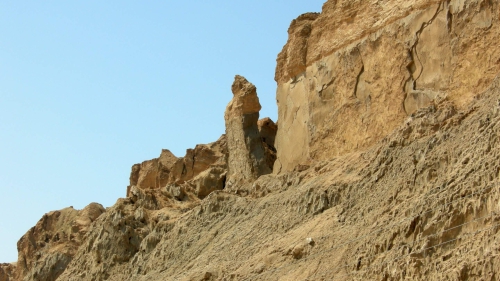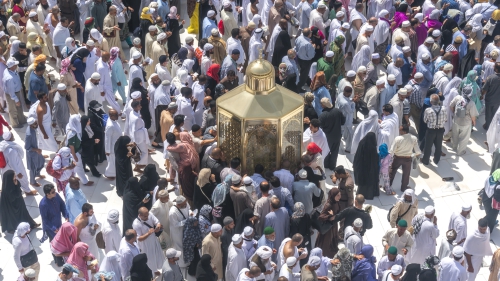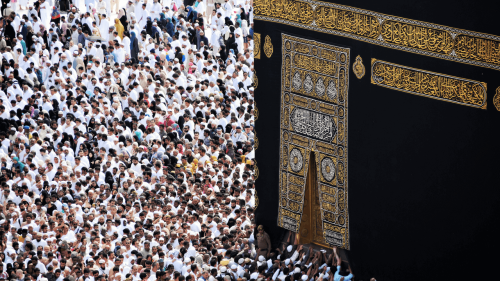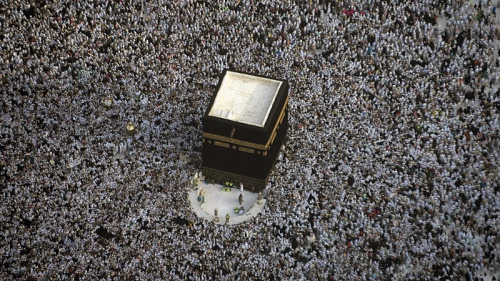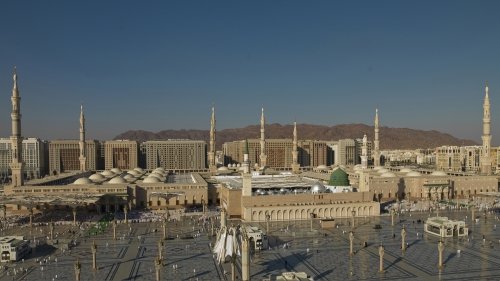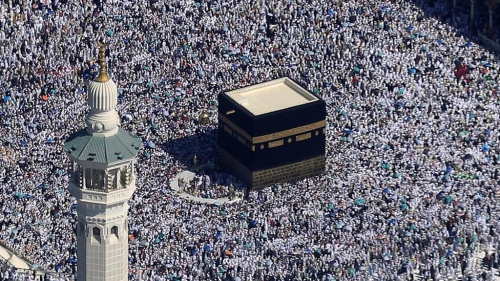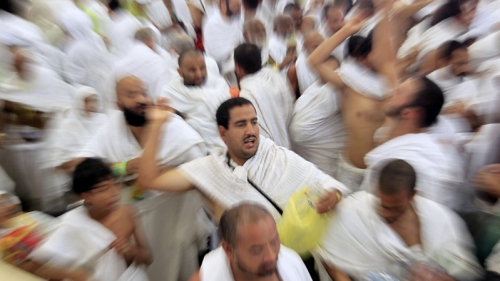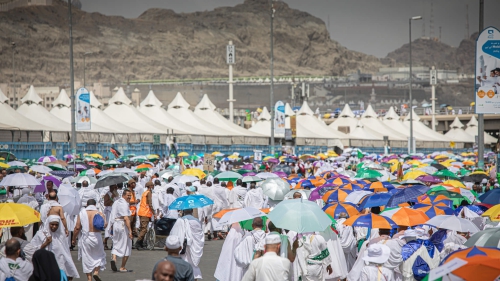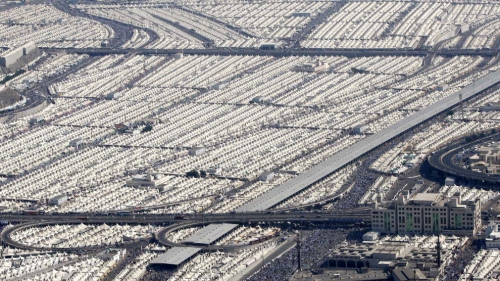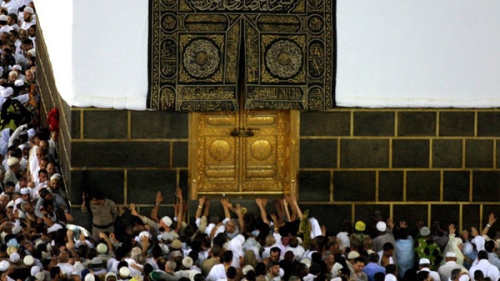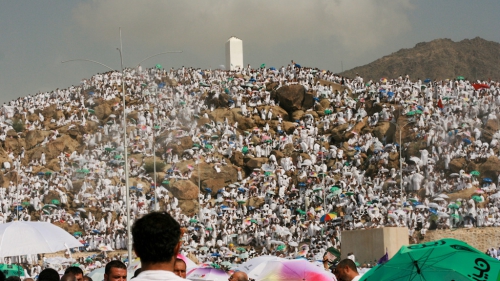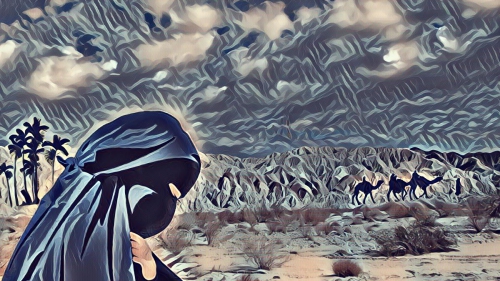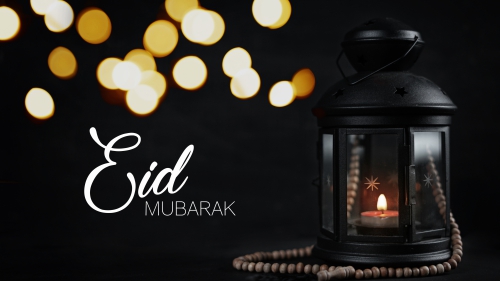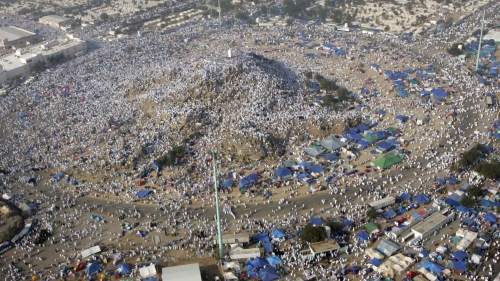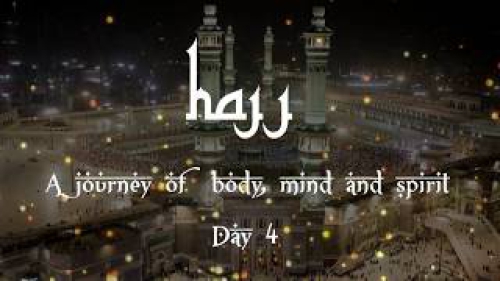Hajj and Kabah Connecting the Believers

In every religious universe created by God through revelation, there exists a center for the followers of that religion, a center where Heaven and earth touch each other. For Islam, this center is the Kabah, where the vertical and horizontal axes of existence meet, where the Transcendent manifests Itself as the Center that is both in this world and beyond it.
It is this gate to the realms beyond humanity’s ordinary world and at the same time the earthly center of the religion that draws and attracts men and women in whom the yearning for the Divine, which is kneaded with the substance of our fitrah or primordial nature, is still alive. That is why for over 1400 years Muslims from near and far have journeyed to Makkah to behold the Kabah or the House of God (bayt Allah) and to circumambulate (tawaf) around it like moths flying around the light of a candle.
Islam itself is a return to the primordial religion (al-din al-hanif) and therefore for Muslims, its center is none other than the primordial Center built, according to traditional Islamic belief, by Adam himself after the Fall as an earthly reflection of the celestial temple. It was rebuilt by Abraham, the renewer of the religion of Unity (al-tawhid) and the father of what we call monotheism. With the revelation of the Quran by the order of God, the rite of pilgrimage to it became one of the pillars and obligatory rites of Islam, called the rite of the Hajj. This rite in its Islamic manifestation is a reflection of the rite performed by Abraham and performed in its present form for the first time by the Prophet himself, and is emulated to this day by the millions of Muslims who undertake it.
By virtue of the performance of this rite, Muslims return to the monotheism of Abraham and in fact to the primordial religion of Unity first promulgated by Adam. In the deepest sense, through its performance, they return to the Adamic state. They thus return, at least potentially, to their own film/t and realize their primordial nature which is now forgotten by most but which still resides deep within the essence of all human beings, the nature of which according to the Noble Quran attested to the Lordship of God even before the creation of this world and man’s Fall.
The Kabah is of course located at the heart of Makkah, from where the Blessed Prophet of Islam - may peace and blessings be upon him - hailed, where he was raised, where he received the first Quranic revelation, where he spent the first dozen years of his prophetic mission and where the first Islamic community was formed. The pilgrimage to the Kabah is, therefore, also the visitation of the foundational realities of Islam, for it was in this city called Umm al-qura or Mother of Cities that events which have determined aspects of all later Islamic history and which are still alive in their inner meaning in the life of every pious Muslim took place. The advent of the descent of the Noble Qur’an through the agency of the Archangel Gabriel to the heart of the Blessed Prophet still reverberates in the very air one breathes in this holy city.
The greater, as well as the lesser Hajj, are governed by strict regulations that must be followed on the basis of the teachings of the Noble (Quran and the acts and words (Sunnah) of the Blessed Prophet. The greater Hajj must be performed during a particular and specified month of the Islamic lunar calendar. It takes place over several days during which the pilgrims must perform certain rites not only in Makkah around the Kabah, but also in certain areas around the holy city such as Arafat and Mina. The rite culminates in the sacrifice of an animal, whose meat is usually given to the poor, and a return to the Sacred Mosque (Masjid al-Haram) at the center of which stands the Kabah.
Since the greater Hajj is obligatory once in a lifetime for every Muslim who fulfills the conditions promulgated by Islamic Law (al-Shariah), a very large number of pilgrims assemble in Makkah during the Hajj season. With the population of the Islamic world on the rise, there are now millions of people who perform this rite every year and today the Hajj is the largest religious event of its kind in the world. It seems, in fact, a miracle that the Hajj usually passes without any major incidents most years, although it remains, despite modern amenities, a very difficult rite to perform - as in fact, it should be.
It is not, however, only for the greater Hajj (Hajj al-tamattu) that pilgrims visit Makkah. One can also make the lesser pilgrimage called Hajj al-umrah at any other time during the year and many more millions do so every year. The lesser pilgrimage is much easier to perform but it still brings the pious to the Divine Presence manifested in the House of God. Therefore, almost throughout the whole year one can observe tens of thousands and often hundreds of thousands of people praying in circular fashion around the Kabah, which is the direction of prayer (al-qiblah) towards which Muslims must orient themselves in their daily canonical prayers (al-salah), no matter where they are in the world.
In Makkah Muslims experience directly the fact that they have the same direction of prayer no matter where they hail and from where they perform their canonical prayers. The Islamic community in its totality constitutes what is known as al-ummah, each Muslim being like a point on the circumference of a circle whose center is the House of God and ultimately, of course, the Master of the House Himself. Furthermore, in the same way, that every point on the circumference of a circle is connected by a radius to the center of the circle, every Muslim, by virtue of being a point on the circle that is the ummah, is connected by an invisible ray to the center which is the Kabah.
Excerpted from "Hajj" by Reem Al-Faisal with text by Syyed Hossein Nasr.
Topics: Hajj, Kabah, Prophet Ibrahim (Abraham), Tawhid (Oneness Of God) Channel: Hajj - Day 4
Views: 3667
Related Suggestions






